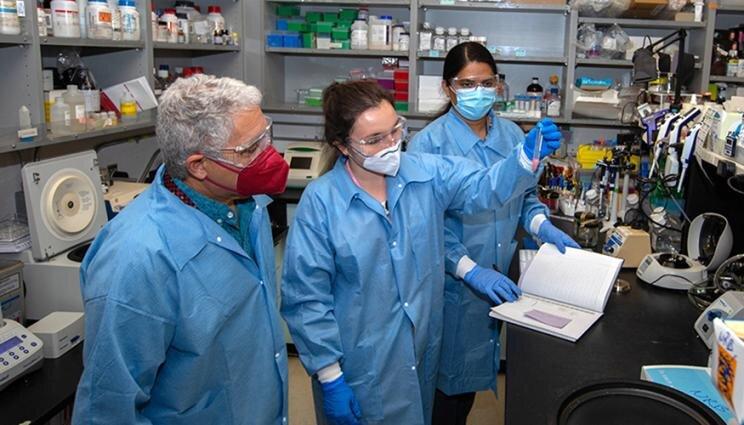Vocal Biomarker Market Benefits from Advancements in Natural Language Processing Technologies

The vocal biomarker market is positioned as one of the most promising frontiers in the digital health space. By analyzing various aspects of a person's voice, including tone, pitch, tempo, and modulation, vocal biomarkers have the potential to detect a wide range of physical and mental health conditions. From neurological disorders to cardiovascular diseases and mental health issues, this non-invasive diagnostic method offers exciting prospects for early diagnosis, continuous monitoring, and remote healthcare services.
However, while the opportunities in this space are vast and compelling, the growth of the vocal biomarker market is not without its challenges. There are several restraints technical, regulatory, ethical, and societal that continue to hinder widespread adoption and limit the full realization of its potential. For stakeholders, understanding these restraints is crucial to navigating the landscape and developing solutions that foster responsible innovation.
Data Privacy and Ethical Concerns
One of the most pressing restraints facing the vocal biomarker market is the issue of data privacy. Voice is a deeply personal biometric identifier. It not only contains health-related information but can also reveal gender, age, language, emotional state, and even geographic background. The use of voice recordings for diagnostic purposes, therefore, raises significant concerns about consent, ownership, and misuse of data.
In many parts of the world, regulations around biometric data are either fragmented or underdeveloped. Even where protections exist, enforcement can be inconsistent. Without clear legal frameworks and robust security measures in place, patients may be hesitant to participate in voice-based health assessments. Building trust will require the industry to adopt transparent data policies, implement strong encryption protocols, and ensure that users retain control over how their voice data is collected, stored, and used.
Lack of Standardization
Another major restraint is the absence of standardization in vocal biomarker research and implementation. Currently, there are no universally accepted protocols for collecting, analyzing, or interpreting voice data in a healthcare setting. This makes it difficult to compare results across studies or validate the reliability of different tools and platforms.
Inconsistent methodologies can lead to variations in diagnostic accuracy, ultimately affecting clinical outcomes. For healthcare providers and regulators to fully embrace vocal biomarkers, there must be a concerted effort to establish industry standards. These would need to define not just the technical specifications but also the ethical and clinical guidelines for deployment.
Limited Clinical Validation
Although numerous studies have demonstrated the potential of vocal biomarkers in detecting specific diseases, many of these remain in the experimental or pilot stages. There is a lack of large-scale, longitudinal clinical trials that confirm the efficacy of voice-based diagnostics across diverse populations.
This limited clinical validation makes healthcare professionals cautious about incorporating vocal biomarkers into mainstream practice. Doctors and specialists tend to rely on tried-and-tested diagnostic tools that have a long track record of accuracy and reliability. To gain acceptance, vocal biomarker technologies must produce consistent, peer-reviewed evidence that demonstrates both sensitivity and specificity in real-world scenarios.
Technological Limitations
While artificial intelligence and machine learning have dramatically improved voice analysis capabilities, the technology is still evolving. Accurate interpretation of vocal biomarkers requires sophisticated algorithms trained on diverse and comprehensive datasets. Variations in language, dialect, background noise, microphone quality, and individual speaking habits can all affect the outcome of the analysis.
Moreover, different health conditions may manifest in similar vocal traits, making it difficult to isolate specific disorders without additional context. Until these technical issues are addressed, there remains a risk of false positives or negatives, which can undermine user confidence and clinical utility.
Accessibility and Inclusivity
There is also the question of accessibility. Vocal biomarker tools often rely on smartphones or internet-connected devices, which may not be readily available in low-income or rural areas. Additionally, most current models are trained on voice data from certain linguistic or demographic groups, limiting their effectiveness across diverse populations.
For vocal biomarkers to become a truly global diagnostic tool, developers must ensure that their technologies are inclusive and accessible. This means gathering training data from a wide range of languages, accents, and health backgrounds, as well as developing low-bandwidth solutions that can function effectively in underserved regions.
Regulatory Hurdles
Finally, regulatory uncertainty poses a significant restraint. Most healthcare systems operate under strict rules when it comes to approving new diagnostic tools. Agencies like the FDA and EMA require substantial evidence of safety and efficacy before granting market access. The novelty of vocal biomarkers, combined with the lack of precedent, means that regulatory pathways are still being defined.
This uncertainty can slow down product development timelines and deter investment. Startups and innovators may struggle with compliance requirements or face delays in receiving the green light for commercial rollout. Clarity in regulatory guidance will be crucial for accelerating adoption and securing stakeholder confidence.
Moving Forward
Despite these restraints, the vocal biomarker market continues to attract interest and investment. The potential benefits early diagnosis, remote monitoring, personalized care are too significant to ignore. But to realize this promise, stakeholders must work together to address the barriers that are holding the field back.
By focusing on clinical validation, improving inclusivity, enhancing privacy protections, and pushing for regulatory clarity, the industry can begin to unlock the full potential of vocal biomarkers. Only then will this innovative technology transition from experimental research to everyday clinical practice, reshaping how we understand and manage human health.
- Art
- Causes
- Crafts
- Dance
- Drinks
- Film
- Fitness
- Food
- Games
- Gardening
- Health
- Home
- Literature
- Music
- Networking
- Other
- Party
- Religion
- Shopping
- Sports
- Theater
- Wellness


